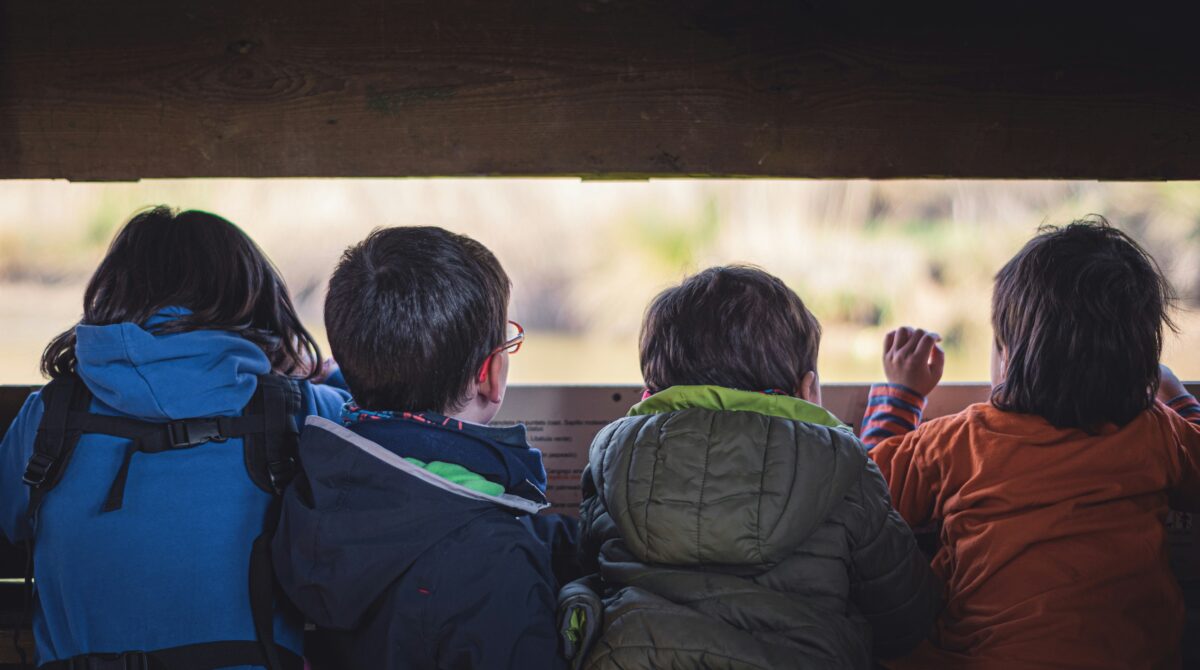What is the mission of Source International ONLUS?
Source International is a non-governmental organization established in Italy, but its mission is to provide scientific and technical support to communities worldwide fighting for human rights, particularly the right to live in a healthy environment. For instance, communities facing severe pollution due to large-scale human activities.
In Italy, we combine scientific and technical support with awareness-raising and educational activities. On the one hand, we carry out concrete actions with a direct impact on the territory, while on the other, we focus on prevention, awareness, and public education initiatives.
The project “Langhe at School: Actions and Voices for the Climate” recently started. Can you tell us how it originated and its objectives?
The Langhe is a region in Piedmont that, since 2022, has been suffering from severe water stress. In 2023, many municipalities in the area had to rely on water deliveries by tanker trucks.
We reflected on the area’s challenges and what could be done. Together with teachers from the Comprehensive Institute of Bossolasco-Murazzano, we developed the idea of an educational program for primary and secondary school students, focusing on the water crisis, drought, and mitigation strategies.
The first step was installing rainwater collection tanks, as most mountain schools have school gardens. Then, the program emphasized the importance of biodiversity as a strategy for mitigating climate change. The Langhe is characterized by vineyards and hazelnut groves—a beautiful but biodiversity-poor area, with numerous resulting challenges.
The project unfolds in three specific actions. Can you describe them?
The first goal is to develop an educational program with teachers, raising awareness among students through access to information about environmental issues and climate change.
The second involves implementing concrete actions to translate this knowledge into impactful local measures. For example, students will regenerate 2,000 square meters of abandoned municipal land and create a forest by planting various plant species that have been lost—plants that are endemic and traditionally significant for the local culture but were replaced by monocultures.
Creating a forest is a long-term endeavor, serving as a strong metaphor for climate change mitigation efforts.
The final goal is for students to create a graphic novel on best practices for the climate—a comic book that serves as a manual for environmental actions.
How does the project align with the UN’s General Comment No. 26 on children’s rights in relation to climate change?
The UN comment identifies young people as key agents of change.
On one side, it encourages providing access to information and equipping them with the tools to understand critical topics such as climate change, biodiversity, and public participation processes. On the other, it emphasizes the importance of amplifying young voices, as they will inherit the planet, and it’s only fair for them to realize the power they hold.
The aim is to inspire young people to reclaim their future.
For instance, the second workshop will focus on youth public participation, exploring tools that enable young people to influence local policies and engage in the political life of their community.
New generations are particularly sensitive to these issues and can make significant contributions to climate change management, mitigation, and adaptation policies.
What actions can citizens take to reduce the impact of water overuse, such as that caused by monocultures, in the Piedmont region?
There are many actions! We asked students to suggest ideas. Last year, they created a Water-Saving Manual, combining imaginative and practical ideas for local residents. At Source International, we have various scientific and technical tools to offer, but without local knowledge and the community’s active involvement, we cannot achieve much.
One actionable step is installing rainwater collection tanks to store water during heavy rains for later use, such as watering gardens, allowing the soil to absorb water more gradually over time. Another is reducing monocultures.
For home gardens, principles of agroecology can be applied, such as planting diverse species, including those more resistant to drought. Climate change and drought are realities we must face, so we should revive practices that enhance territorial resilience—for instance, reintroducing ancient, drought-resistant plant species.
At the municipal level, creating biodiversity oases like the forest in our project is vital for preserving species diversity. Establishing exchange networks is crucial for the success of any project and for achieving local impact. Especially in sparsely populated areas like this, municipalities can collaborate and connect with local organizations.
It is also crucial to give visibility to locally implemented environmental projects to make them replicable in other areas.
When it comes to climate actions, does every place have its peculiarities, or are there solutions that apply universally?
Water and biodiversity issues affect or will affect all regions. Some regions are more resilient due to their natural or infrastructural capacity.
Recognizing the importance of biodiversity best practices is vital for all areas because a common trend is replacing native plant species, which are essential for animal biodiversity, soil health, and ecosystems.
We need to adopt a more ecosystemic vision, moving away from utilitarian perspectives and anthropocentric views. Actions should have long-term repercussions, yielding benefits over years rather than focusing solely on short-term advantages for humans.
